A route concept study on the Brisbane - Gold Coast connection
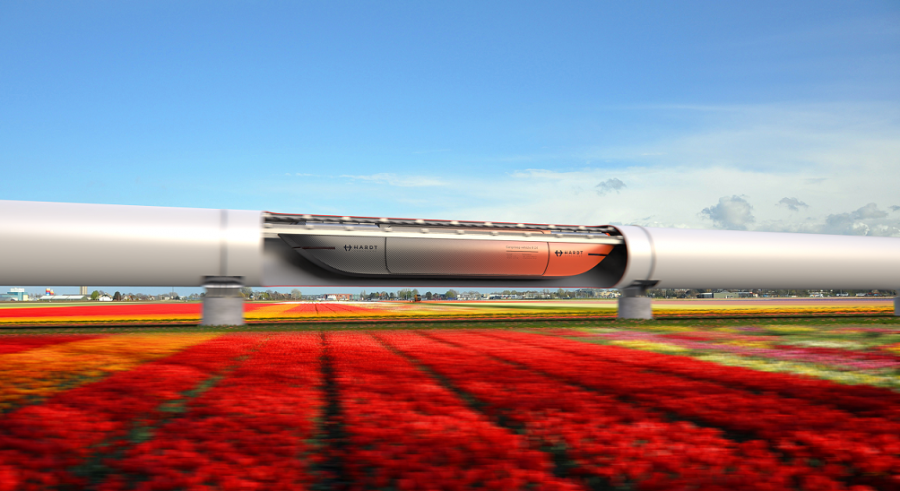
This report explored the potential of a direct hyperloop shuttle between Brisbane and the Gold Coast in Southeast Queensland. With the emergence of new modes of transportation, strategic planners are advised to consider the potential opportunities these new modes can bring. The proposed hyperloop scenario aims to address population growth, road congestion, and rail uncompetitiveness by providing a faster and more efficient mode of transportation. This report discusses routes, estimated demand for hyperloop services and the potential (financial) benefits are discussed.
Strategic context
According to this route concept study, the transport mobility mix is expected to change in the next decade, with the emergence of new modes of transportation, such as automated vehicles and drones, as well as continued innovation of existing modes, such as high-speed trains. Strategic planners are advised to consider the potential opportunities these new modes of transport can bring as they approach technological readiness, particularly in delivering outcomes that existing modes cannot. The study notes that hyperloop, a new transportation technology, is expected to achieve commercialization in the 2030s, which coincides with Queensland’s 30-year Transport Strategy. As a result, early consideration of the hyperloop concept in Southeast Queensland may set the direction for long-term competitiveness.
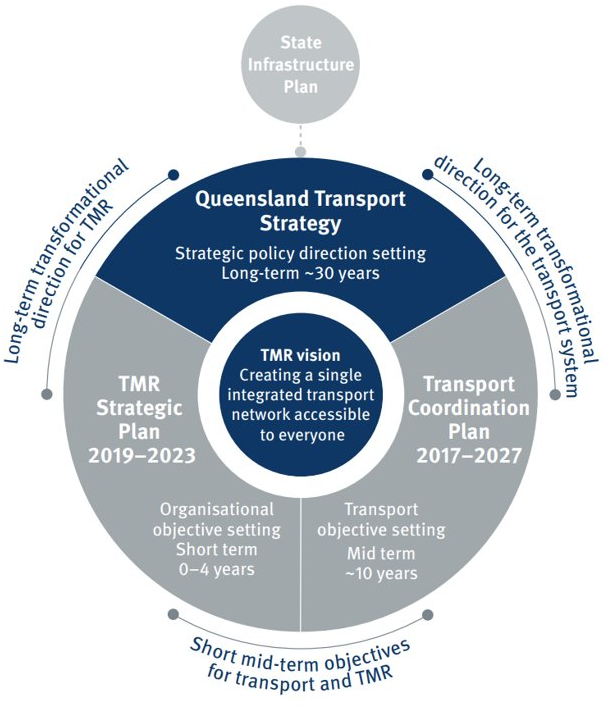
Challenges and opportunities
Despite a recovery in annual population growth to pre-COVID levels, Queensland faces challenges with rising road congestion. Two sections of the M1 Pacific Motorway are expected to become the 6th and 10th most congested corridors in Australia by 2031.
Additionally, the existing Brisbane-Gold Coast rail services are hindered by slower speeds and dispersed land use patterns throughout Southeast Queensland, making them noncompetitive. The low mode share for public transport further exacerbates the issue, as it contributes to the state's dependence on private vehicles. With the current rail service taking 1 hour and 21 minutes and the road journey only 55 minutes, the public transport mode share in Brisbane is at 10%, and in Gold Coast, it is at 4%. These challenges present an opportunity for a new, faster, and more efficient mode of transportation, such as the proposed hyperloop project.
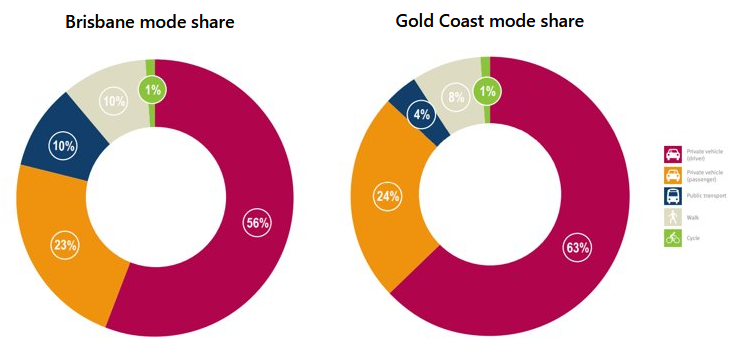
Route
The proposed scenario in this report involves the testing of a direct hyperloop shuttle between Brisbane and the Gold Coast, without intermediate stations, to determine its strategic merit. The Woollongabba hub will integrate with the Cross River Rail at Boggo Road and the 2032 Olympic games venues, while the Southport hub will integrate with the Gold Coast Light Rail. Two 3.5-metre tubes will be placed within a 7-metre corridor, and consideration will be given to extensions to Brisbane Airport, Port of Brisbane, the Sunshine Coast, and Northern NSW.
The concept definition principles aim to make use of the hyperloop's guideway flexibility by using existing rights-of-way, specifically the M1 Pacific Motorway, while avoiding Brisbane central business district and Surfers Paradise. The proposed scenario supports public transport integration through interchange at strategic centers. This approach may prove useful for addressing population growth, road congestion, and rail uncompetitiveness by providing a faster and more efficient mode of transportation.
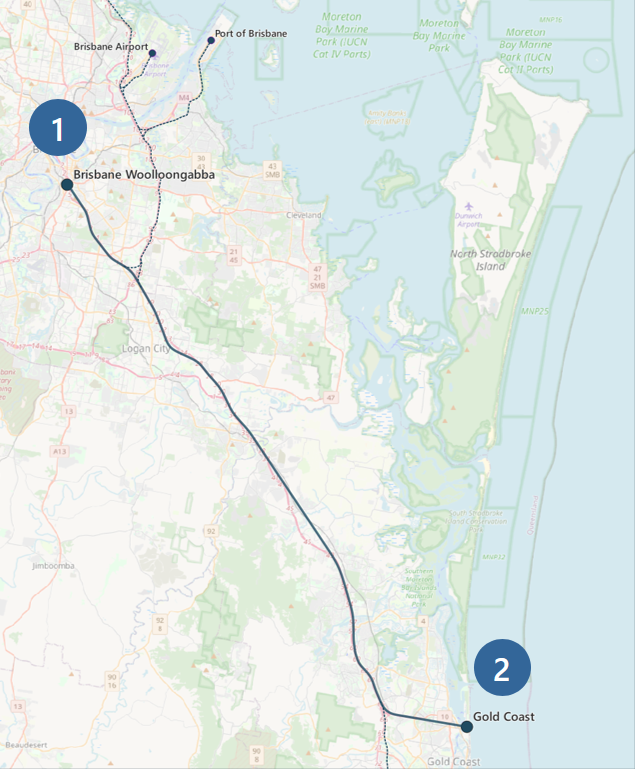
Expected demand
The estimated demand for hyperloop services between Brisbane (Woollongabba) and Gold Coast (Southport) is based on existing demand forecasts between the Brisbane and Gold Coast Greater Capital City Statistical Area (GCCSAs) in 2031. This information was obtained from the IA Audit in 2019. To compare the mode share, a mode shift model is applied based on behavioral factors such as travel time, value of time, reliability, cost, and comfort. The mode share is analyzed with and without the hyperloop intervention to forecast the hyperloop demand.
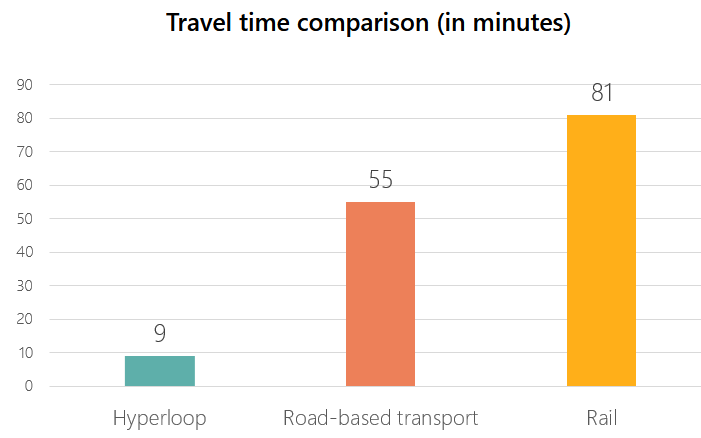
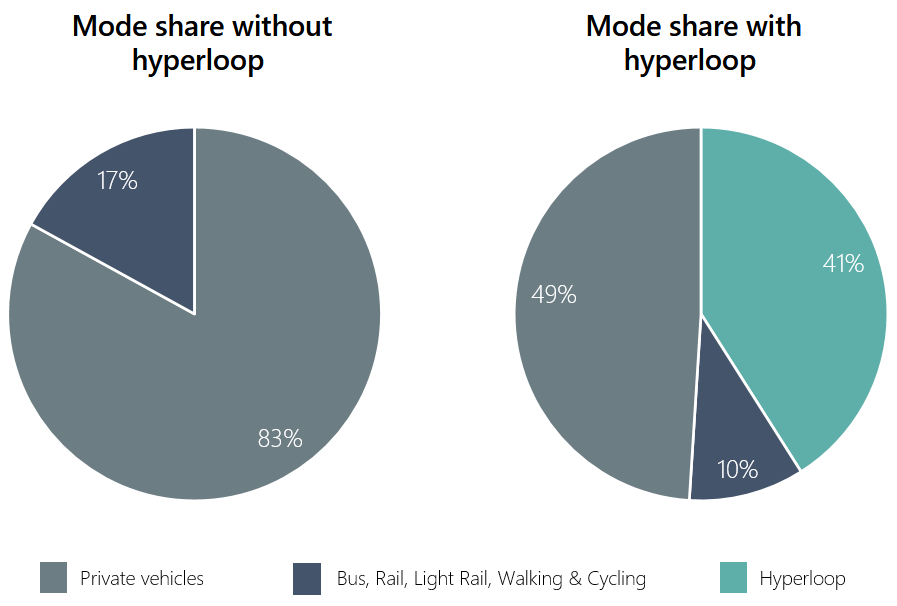
The direct hyperloop shuttle between Woolloongabba and Southport would provide significant travel time savings compared to the existing modes of transportation (as can be seen in the chart above). The estimated 9-minute travel time in would result in a substantial decrease in private vehicle mode share from 83% to 49% for journeys between the two GCCSAs in 2031. This would be a result of the increased convenience and speed of the hyperloop, compared to rail and road-based transportation.
If the hyperloop is implemented by 2031, it could provide 47 million annual passenger trips, subject to further refinements of strategic estimates. The growth factor of 3.69% per annum (IA) would result in hyperloop delivering 94 million trips per annum by 2050 (see chart below).
To accommodate this demand, two 3.5-metre hyperloop tubes in a single 7-metre corridor could operate in a mass-transit style with a capacity of 20,000 passengers per hour, per direction. This would allow the hyperloop to meet the forecast demand and provide a reliable and efficient transportation option for commuters traveling between Brisbane and Gold Coast.

Costing and performance
Below the costs and benefits of the project are shown.
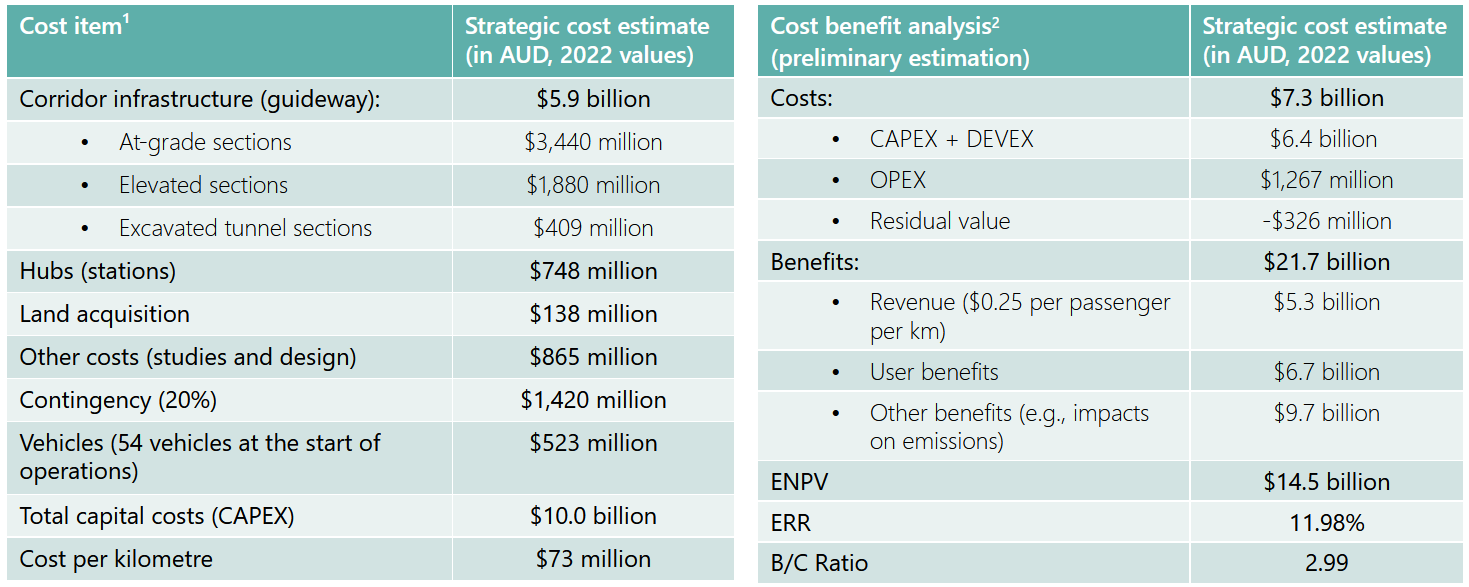
Conclusion
A high-speed corridor between Brisbane and the Gold Coast could have several benefits. It could provide additional travel options along the SEQ corridor, which would ease the burden on existing roads. Furthermore, a shift in travel mode from cars to hyperloop could significantly decrease energy consumption and greenhouse gas emissions. In addition, the existing Brisbane-Gold Coast rail could gain greater importance by adding a new high-speed mode to SEQ's transportation mix, thereby supporting existing investments. This corridor could also integrate Brisbane, the Gold Coast, the Sunshine Coast, and Northern NSW into a single commutable catchment, thus transforming land uses along the SEQ corridor. Finally, the development of a new hyperloop industry in Queensland could be sparked by this project.
Acknowledgements

